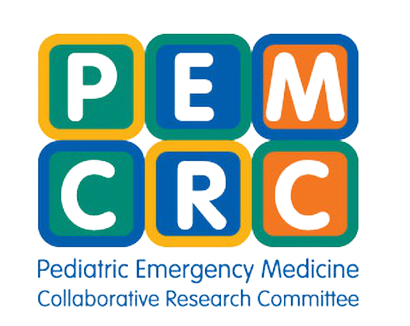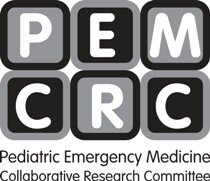The PEM CRC provides a framework for multi-center investigation, serving to support and facilitate the development of useful and rigorous collaborative research within pediatric emergency medicine.
2025 CONCEPT DUE DATE: June 12, 2025
2025 Finalist Notification: July 11, 2025
2025 Full Proposal Due Date: August 15, 2025
2024 AWARDEE: Caitlin Crumm, MD, MS
Creation and Validation of a Clinical Prediction Rule to ‘Rule Out’ Need for Abuse Workup in Pediatric Head Injury in the Emergency Department
2023 AWARDEE: Kelly Bergmann, DO, MS
Racial and Ethnic Differences in Acute Kidney Injuries in Children and Adolescents with Diabetic ketoacidosis
The Aris Garro PEM CRC Research Prize is awarded annually to up to one innovative, multicenter research concept in pediatric emergency medicine. Selected proposals will receive:
Access to >40 EDs that comprise our research network
Mentorship from experienced PEM researchers
In-kind access to the PEM CRC Data-Center at the Baylor College of Medicine, which supports development of data-use agreements, data dictionaries, data aggregation and data cleaning
Letters of Support for extramural grant applications (if needed)
Separate from the Research Prize, interested investigators may submit concepts at any time to the Steering Committee. However, for these “off-cycle” proposals, Data Center access will not be offered.
Initial submissions for review (either for the Research Prize, following the Call for Proposals, or off-cycle review) consist of a 2-page initial concept proposal, which is evaluated by the Steering Committee. The format for the initial proposal should include:
Cover Page:
Include project title, principal investigator (PI) name, title, department, and contact information.
If the applicant is a fellow or junior faculty, please also include name/title/department of the mentor(s) on the proposed project.
A statement should be included that confirms that the PI is a member of the AAP SOEM.
Project Description:
Do not exceed 2 single-spaced pages, Arial 11 size or greater, with one inch margins. This limit does not include the cover page, biosketch(es), or references.
The description should include the following sections:
Background and Significance: What health issue, priority, or knowledge gap within pediatric emergency medicine does this project propose to address?
Specific Aims and Hypotheses: What is/are the research question(s) and the hypothesized outcome(s)?
Methods: How will you address your specific aim? Include a brief overview of study design, population/setting, primary outcomes, and data collection/analysis.
Multicenter Engagement: Why is multicenter engagement needed for the study, or how would it improve the quality of the study?
References (not included in page limit)
Biosketch:
Please include a NIH format biosketch of the PI and (if applicable) the primary mentor(s).
Biosketches should not exceed 5 pages (not counted towards the description page limit).
(NIH biosketch information can be found at https://grants.nih.gov/grants/forms/biosketch.htm)
Guidance for Consideration of Race and Ethnicity in Research Proposals:
PEM CRC Statement
To appropriately justify the inclusion of race and ethnicity in research proposals, and to promote research that addresses health inequities in pediatric emergency medicine, we have provided the following guidance to investigative teams submitting research proposals to the PEM CRC.
Inclusion of race and ethnicity
Race and ethnicity should be acknowledged as social and not biological constructs. The collection of data on race and ethnicity, and the use of racial and/or ethnic categories in models and statistical analyses, should be explicitly justified. As most proposals are retrospective studies, investigators should consider how race and ethnicity are collected at participating sites and acknowledge potential limitations in documentation of racial and/or ethnic categories.
Addressing existing health inequities
We encourage investigative teams to apply an equity lens to their research proposal. While inclusion of a specific aim that addresses health disparities is not a requirement for submission, proposals should consider any existing healthcare inequities within the chosen topic and how the research proposal will contribute to reducing inequities, when possible.


